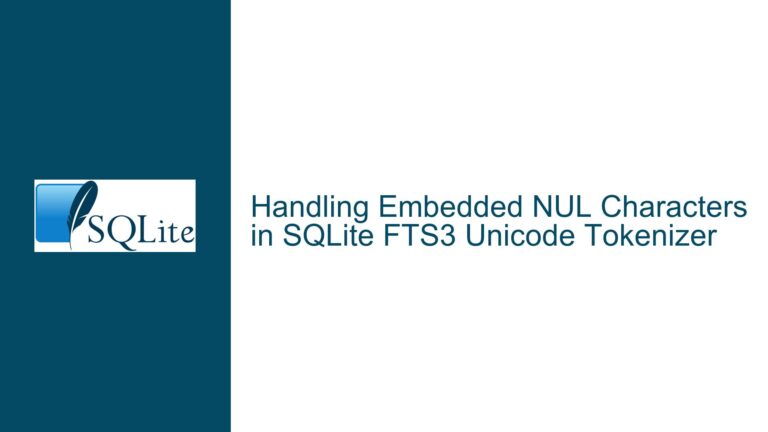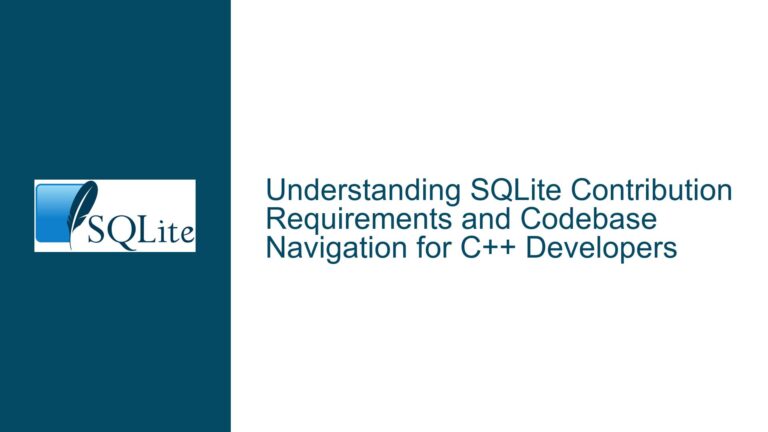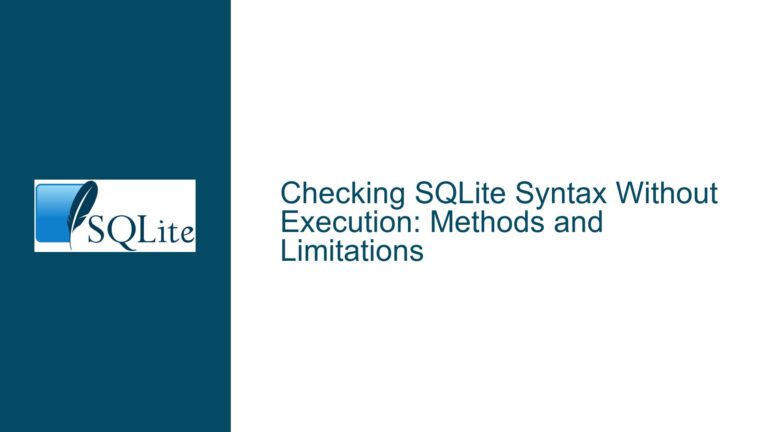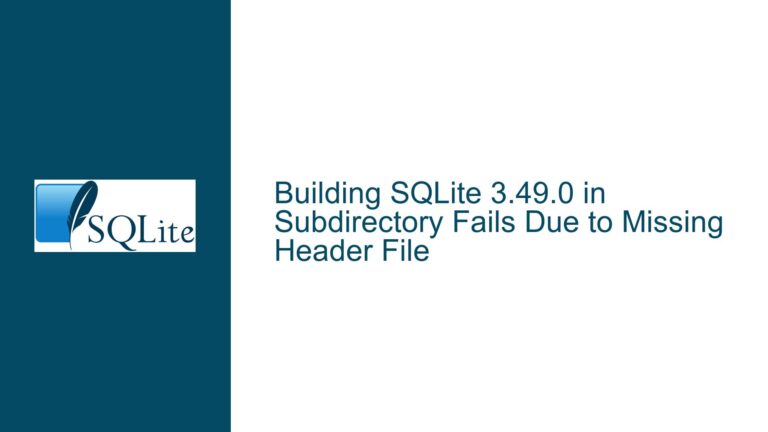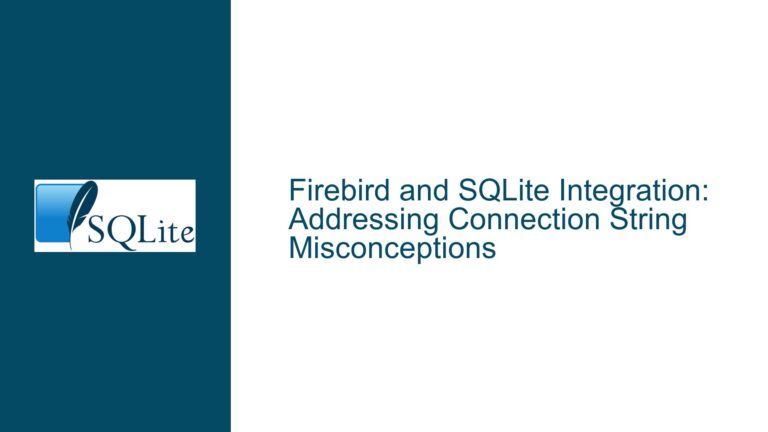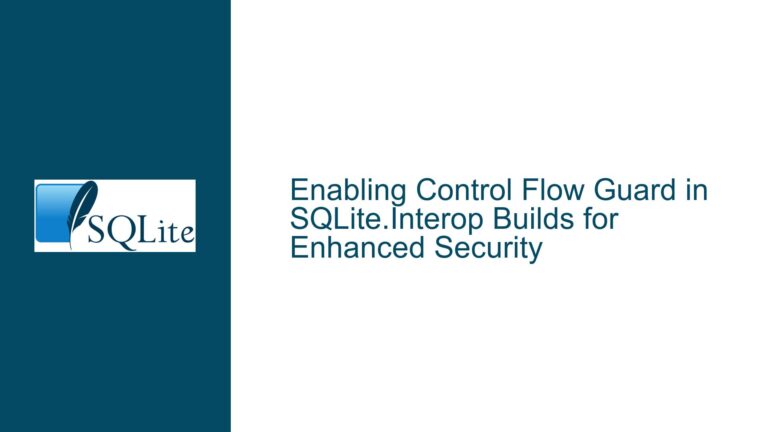Extending SQLite’s SQLAR for Multiple Compression Engines and Levels
Extending SQLAR to Support Multiple Compression Engines and Levels
The discussion revolves around the potential extension of SQLite’s SQLAR (SQLite Archive) utility to support multiple compression engines and compression levels. SQLAR is a built-in tool in SQLite that allows users to create and manage archives using SQLite databases. Currently, SQLAR primarily relies on zlib for compression, which is a widely available and portable compression library. However, the proposal suggests enhancing SQLAR to accommodate other compression engines like Brotli, Zstandard (zstd), and LZ4, which offer superior compression ratios or faster compression/decompression speeds for specific use cases. Additionally, the proposal includes the ability to specify compression levels (e.g., fast, medium, slow) to control the trade-off between compression speed and compression ratio.
The core idea is to make SQLAR more flexible by allowing users to choose their preferred compression engine and level, thereby optimizing performance and storage efficiency based on their specific needs. This would involve extending SQLAR’s command-line interface (CLI) and internal logic to accept additional parameters for compression engine selection and compression level. The proposal also highlights the potential benefits of integrating these features into SQLAR, such as improved compression ratios for large datasets, faster compression/decompression speeds, and the ability to leverage compression engines that are already embedded in scripting environments like Python, Perl, and Lua.
However, the discussion also raises concerns about portability and compatibility. Since zlib is ubiquitous and preinstalled on most systems, relying on other compression engines could make SQLAR archives less portable. Archives created with non-standard compression engines might not be readable on systems where those engines are not available. This trade-off between flexibility and portability is a key consideration in the design and implementation of such an extension.
Challenges in Supporting Multiple Compression Engines and Portability
One of the primary challenges in extending SQLAR to support multiple compression engines is ensuring portability. SQLite and its associated tools, including SQLAR, are designed to be lightweight, self-contained, and highly portable. Introducing dependencies on additional compression engines like Brotli, Zstandard, or LZ4 could compromise this portability. While zlib is universally available, other compression engines may not be preinstalled on all systems, requiring users to install them manually. This could create barriers to adoption and limit the usability of SQLAR archives across different environments.
Another challenge is the complexity of integrating multiple compression engines into SQLAR. Each compression engine has its own API, performance characteristics, and trade-offs. For example, Brotli offers excellent compression ratios but is slower than zlib, while LZ4 prioritizes speed over compression ratio. Supporting these engines would require significant changes to SQLAR’s codebase, including the addition of new functions for compression and decompression, as well as modifications to the CLI to handle engine-specific options.
The discussion also highlights the importance of maintaining backward compatibility. SQLAR archives created with the current version of SQLite should remain readable by future versions, even if new compression engines are introduced. This requires careful design to ensure that archives include metadata about the compression engine used, allowing SQLAR to select the appropriate decompression method when reading the archive.
Furthermore, the proposal to support compression levels adds another layer of complexity. Compression levels allow users to control the trade-off between compression speed and compression ratio, but implementing this feature requires careful consideration of how compression levels are exposed to users and how they interact with different compression engines. For example, some engines may support a wide range of compression levels, while others may only support a few predefined levels.
Implementing and Optimizing SQLAR for Multiple Compression Engines
To implement support for multiple compression engines and levels in SQLAR, several steps need to be taken. First, the SQLAR CLI and internal logic must be extended to accept additional parameters for compression engine selection and compression level. This could involve adding new command-line options, such as --compression-engine and --compression-level, to the sqlar command. These options would allow users to specify their preferred compression engine and level when creating or extracting archives.
Next, SQLAR’s internal compression and decompression functions need to be modified to support multiple engines. This could involve creating a modular architecture where each compression engine is implemented as a separate module or plugin. These modules would expose a common interface for compression and decompression, allowing SQLAR to switch between engines dynamically based on user input. For example, a compress() function in the zlib module would handle zlib compression, while a compress() function in the Brotli module would handle Brotli compression.
To ensure portability, SQLAR should include metadata about the compression engine and level used when creating an archive. This metadata could be stored in the SQLite database that serves as the archive, allowing SQLAR to automatically select the appropriate decompression method when reading the archive. For example, a table named sqlar_metadata could be added to the database, containing columns for compression_engine and compression_level.
Optimizing SQLAR for performance is another critical consideration. Different compression engines have different performance characteristics, and the choice of engine and level can significantly impact the speed of compression and decompression. For example, LZ4 is known for its fast compression and decompression speeds, making it ideal for use cases where performance is a priority. On the other hand, Brotli offers superior compression ratios but is slower, making it better suited for scenarios where storage efficiency is more important than speed.
To help users make informed decisions, SQLAR could provide guidance on selecting the appropriate compression engine and level based on their specific use case. For example, the CLI could include a --help-compression option that lists the available compression engines, their performance characteristics, and recommended use cases. Additionally, SQLAR could include benchmarks or performance tests to help users evaluate the trade-offs between different engines and levels.
Finally, the implementation should include thorough testing to ensure compatibility and reliability. This includes testing with different compression engines and levels, as well as testing on different platforms to ensure portability. The tests should cover a wide range of scenarios, including creating and extracting archives, handling large files, and dealing with edge cases like empty files or files with unusual characteristics.
In conclusion, extending SQLAR to support multiple compression engines and levels offers significant benefits in terms of flexibility, performance, and storage efficiency. However, it also presents challenges related to portability, complexity, and backward compatibility. By carefully designing and implementing these features, SQLAR can become an even more powerful tool for managing archives in SQLite, while maintaining its core principles of simplicity and portability.

